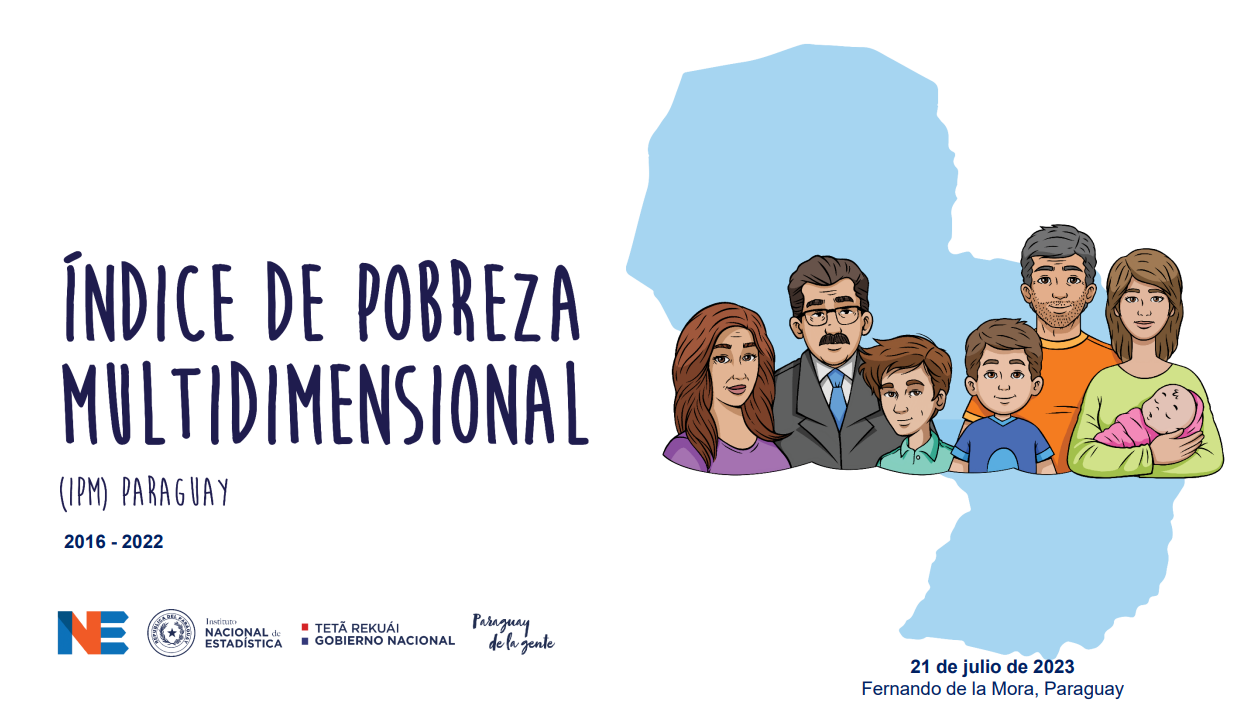Índice de Pobreza Multidimensional (IPM) Paraguay
This report (in Spanish) presents the findings of the Multidimensional Poverty Index (MPI) of Paraguay, which aims to inform and guide poverty reduction strategies. The Paraguayan MPI was developed as part of a collaboration led by the National Statistics Institute (INE) of Paraguay, with technical support from OPHI.
This report is based on the national Permanent Survey of Households, ‘la Encuesta Permanente de Hogares (EPH)’, which is updated regularly. The report of the MPI uses data from the fourth quarter of each year from 2017 to 2020 to scrutinize poverty levels and trends. A person is considered multidimensionally poor if they are deprived in 26% of the 15 weighted indicators grouped under the four dimensions: ‘Employment and social security’, ‘Housing and public services’, ‘Health and environment’, and ‘Education’.
Key findings include:
- In 2020, 24.9% of the population of Paraguay were living in multidimensional poverty.
- In 2020, the intensity of poverty, or average share of deprivations experienced among the multidimensionally poor population, was 37.7.%.
- In 2016, the incidence of the population who were multidimensionally poor was 34.3%, falling to 24.9% in 2020.
- in 2020 the incidence of multidimensional poverty in rural areas (44.6%) was higher than in urban areas (13.3%).
Citation: Benítez, M.A., Ojeda Aguilera, I.M. and Medina, N. (2021). Índice de Pobreza Multidimensional (IPM) Paraguay, Instituto Nacional de Estadística (INE), Paraguay.



